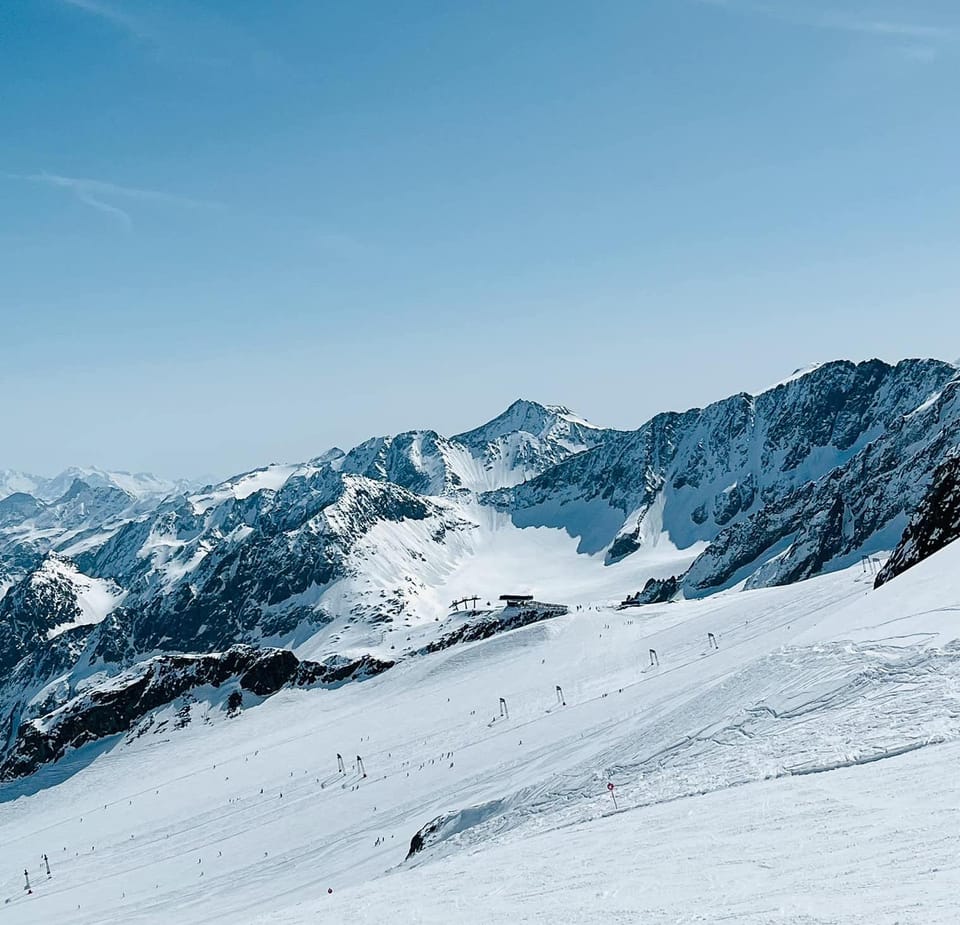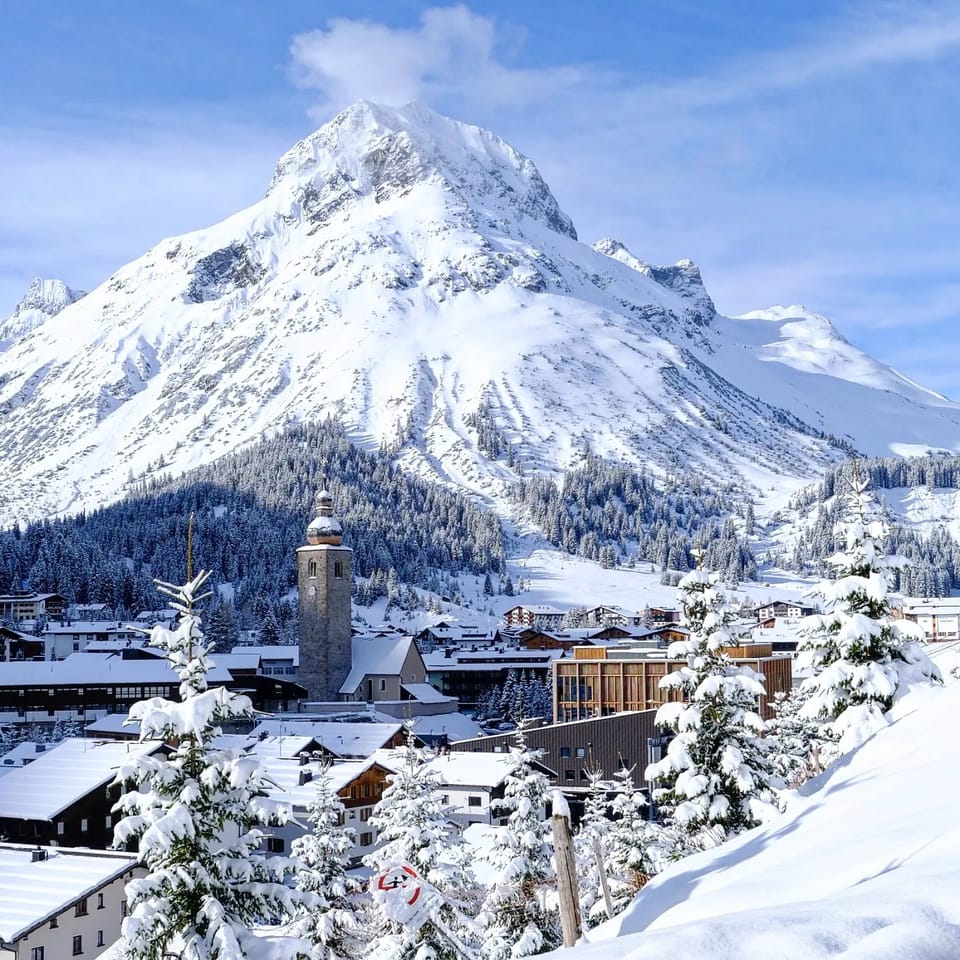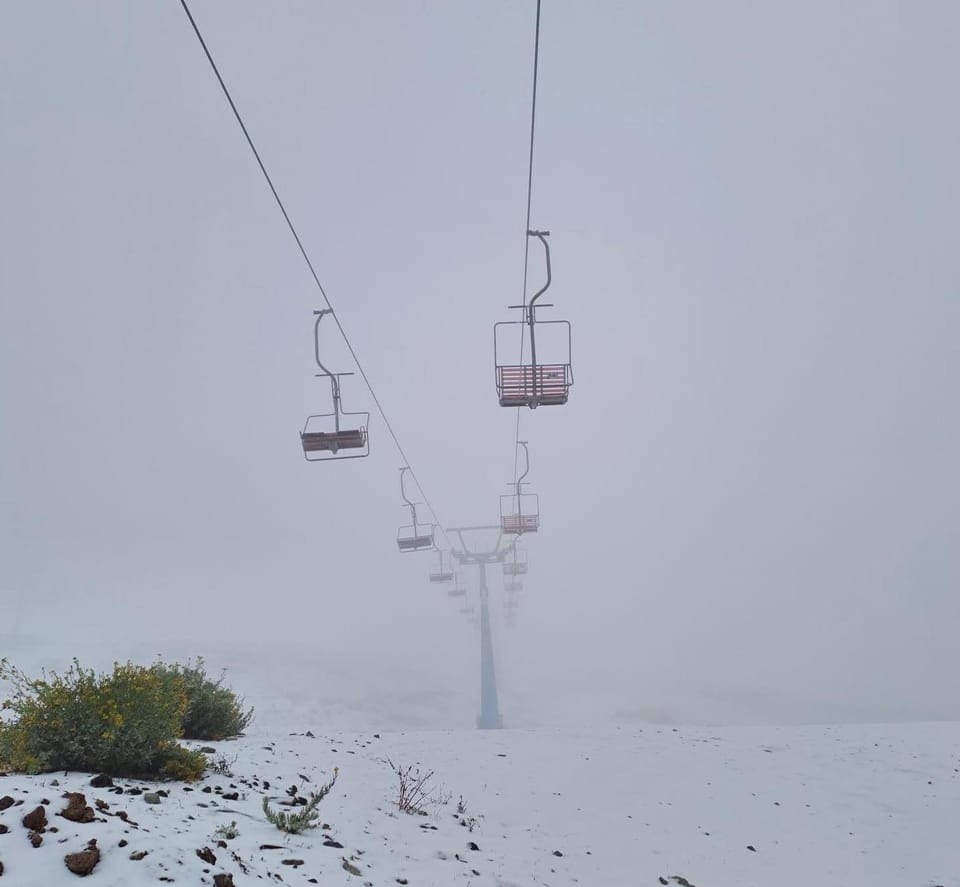Europe Weekly Roundup #231
(Updated 6 March 2024) A comprehensive review of snow conditions, weather, and updates in Europe's winter sports destinations.
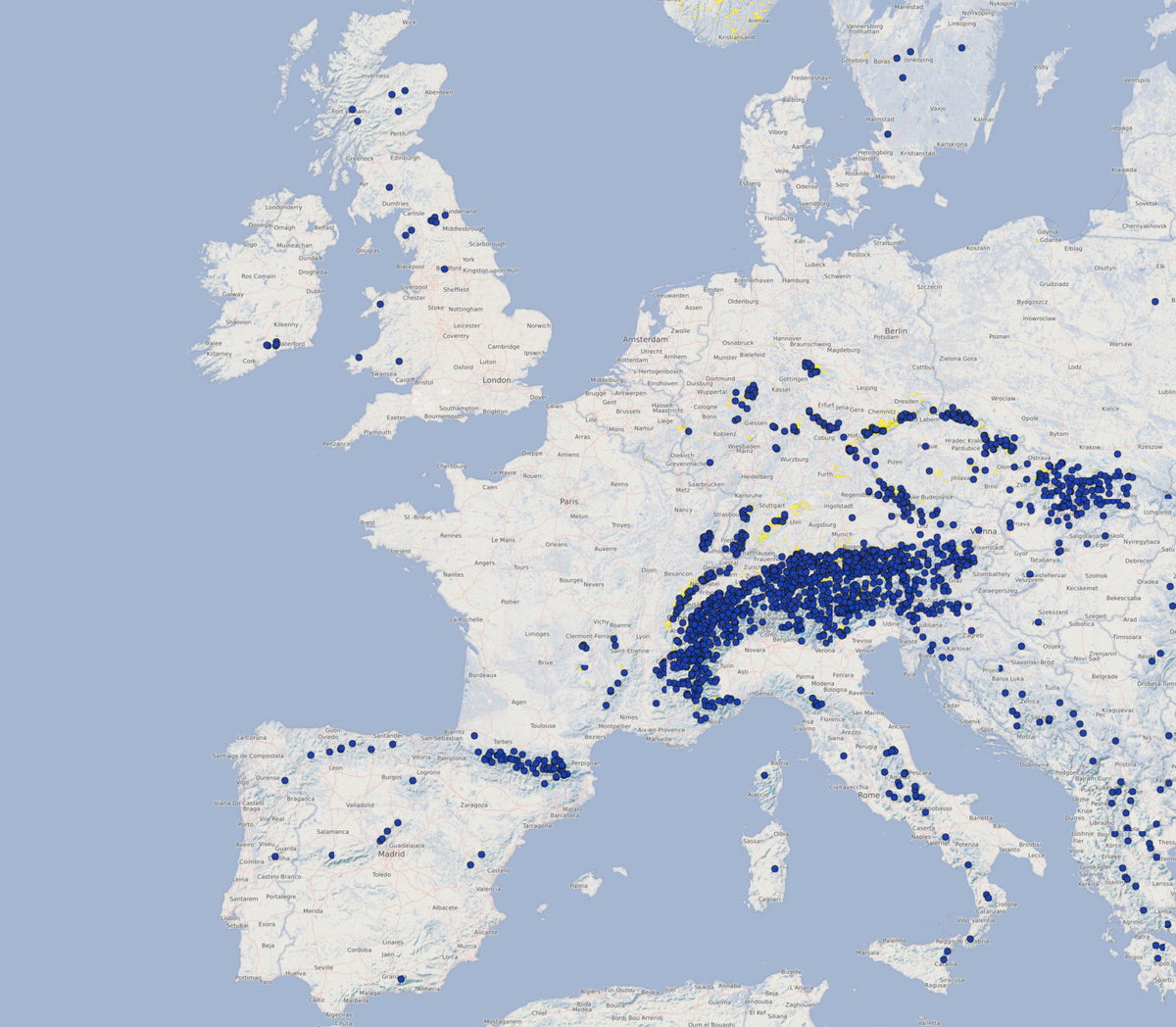
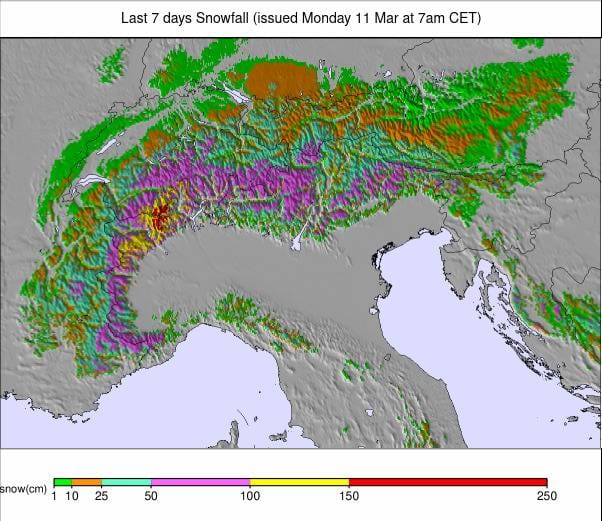
Spring is here, but it feels more wintery than much of winter did in many areas. In Europe, The Pyrenees, which endured record-warm temperatures in December and January, finally saw a huge snowfall last week. This allowed most of the region's big resorts to finally open all (or almost all) of their runs for the first time this season, which is 70% behind them.
It's been another good week for skiers in Europe, with more heavy snow showers and lower temperatures over the last few days following the huge dumps in the final week of February. Bases are healthy in most major areas across the Western and Southern Alps. Despite the big jumps in snow depths in the Alps, there's not a huge change in what's open, as most slopes had been open anyway. They've just now got a much deeper base on them to see them through spring, and freeriding is possible again.
However, the Pyrenees is a different story. Here, all the snow, some centres seeing more than a metre, has equalled, in the last week or so, what had been received all season before, allowing several centres to fully open their slopes for the first time this season, with a quarter of it left to go.
Avalanche danger has increased dramatically with all the snow, though, reaching a 'considerable' level 3 across much of the Alps and a "high" 4 in the Pyrenees. Elsewhere, conditions are becoming more challenging in Eastern Europe as spring conditions take hold.
Scottish areas are still struggling to open much, and in Scandinavia, although the big picture remains good, southerly centres have seen warmer spring temperatures and some rain. As spring conditions take hold, the contrast between regions is evident, with some enjoying the late snowfalls. In contrast, others face the challenges of warming temperatures and the end of their ski season.
Austria
After the big snowfall a week ago, the snow showers have continued in Austria. Still, with temperatures climbing up to +10C in valleys, conditions are gradually becoming 'springlike' rather than 'wintery' with freeze-thaw conditions reaching increasingly high elevations. There have also been periods with strong winds closing slopes.
The good news, though, is that the fresh snowfall has greatly improved conditions on the groomed slopes. Thanks to the fresh falls, there's still some off-piste powder and ski touring to be found. Snow depths on glaciers—most of which are open for at least another three months—are looking good, topped by the Stubai (70/385cm / 28/154"), which reported over a metre of snowfall in the final week of February.
Switzerland
It's been one of the best weeks of the year on Swiss slopes with some big snowfall accumulations. St Moritz (78/288cm / 29/115") reported its upper slope base depth had grown over a metre (40") in a week, one of several centres posting more than a metre of snowfall in 7 days. For Saas Fee (80/370cm / 32/148"), it was 90cm (3 feet) in just three days into last weekend.
All the snowfall has also given the much-needed boost to freeride opportunities but, of course, also pushed the avalanche danger up to "considerable" (level 3 of 5) in most areas. In terms of what's open, which was already pretty much everything before the snow arrived, there's not much changed, but the slopes are in better shape thanks to the fresh snow cover.
It has warmed up a little since the big falls last week, though, with smaller accumulations and sunny spells. Strong winds have also been a factor, though, with some areas closed, or largely closed, due to them earlier this week. The 4 Valleys around Verbier (22/258cm / 9/103") have the most skiable terrain, with 95% of its 410km (257 miles) of slopes still open. But also one of the areas that has been closed at times by the winds.
France
French resorts continue to post the world's deepest snow, with more centres moving back above 4 metres (160") depths after the big snowfalls last week. The snow showers were lighter up to the start of this week but have grown in intensity again in recent days. Along with more sunny spells, valley temperatures have climbed back to high single figures above freezing in the afternoons.
There's little real change regarding what's open, with most leading centres still mostly open. The 3 Valleys continue to post the most in the world at around 550km and over 90% of its terrain. The world's deepest snowpack is at Alpe d'Huez (120/480cm / 48/192").
Italy
Italian ski areas are enjoying some of the best conditions of the winter so far. A low pressure that hung over the Med last week was particularly generous in delivering snowfall to Italian ski areas across the Dolomites and southern Alps. A number of resorts reported more than a metre (40") of snowfall by the end of last week, the biggest fall of the season so far.
Madonna di Campiglio (128/170cm / 51/68") was one of the big winners and posted another 40cm (16") into the weekend, taking its 10-day total past 1.5m (five feet) of snowfall. Most Italian areas were already fully open before the snowfall, and that's not really changed, with most at least 90% open. However, there are also plenty of new off-piste opportunities thanks to the abundant snowfall.
Scandinavia
There has been more snowfall in western and northern Scandinavia, with Norway's Myrkdalen (100/240cm / 40/96"),
There has been more snowfall in western and northern Scandinavia, with Norway's Myrkdalen (100/240cm / 40/96"), which has been posting the region's deepest snow for a while, seeing increased base depth. Most of Scandinavia's larger centres report that they operate 90% or more of their slopes and lifts.
The news isn't all quite as rosy as it has been all season, though, with chinks appearing at more southerly locations like Tryvann near Oslo. The weather this week saw warm temperatures, fog, and rain falling on the snow - not great. There's also been rain at more northerly latitudes, including around Kvitfjell, at times.
Scotland
This week in the Highlands, there has been more snowfall and some perfect periods of still clear weather between the usual spells of lift-closing gale force winds and rain on lower slopes. There's still not much open, though, as snow depths aren't good enough to safely open much of the terrain.
Glencoe has the most terrain open still, with The Lecht and Glenshee offering very limited areas suited mostly to beginners. Nevis Range is unable to offer snowsports, other than sledging, at all for now, unfortunately. Cairngorm has announced it is dropping to a five-day week (Thursday to Monday) until conditions improve, although it did manage to re-open higher runs, with a 20-minute hike up to and back from them, at the weekend.
Spain / Andorra
It's been the most exciting week of the season so far in the Pyrenees, incredibly one where some ski areas have seen as much snowfall in the last seven days as they did in the first three months of the season. The snowfall - some areas reporting more than a metre (40") of fresh snow also means that resorts - have been finally able to open lower or steeper terrain they had had to keep closed all winter up to now.
So we see Formigal (20/140cm / 8/56") jump to 140km (nearly 90 miles) of runs open at the weekend after having only about a quarter of that available all season up to now, while the region's largest area, Andorra's Grandvalira (30/110cm / 12/44
Germany
Germany's poor 23-24 season is now in a clear downward trajectory with about half of the 50 or so centres that were open last week now closed, leaving only a few dozen battling on, so only about 10% of the country's areas. Most of those still open only have 50-70% of their slopes available, but there are exceptions, including Oberstdorf's Fellhorn (30/136cm / 12/44"), which reports every run still open.
It's been another week of mixed conditions, with some snow showers and warm temperatures at times. The Zugspitze (120/266cm / 48/106") has the country's deepest snow and should stay open the longest.
Bulgaria / Romania
We're continuing to see occasional light snowfalls in Bulgaria and Romania, along with warm temperatures to high elevations at times. Hence, the big picture is of the spring thaw starting to take hold, with occasional fightbacks from winter weather. Bansko's (10/90cm / 4/36") base is down a little, but it continues to post-to-bottom skiing, including the long run back to the resort, and more than 80% of its slopes open.
CZECH REPUBLIC / SLOVAKIA
Conditions are deteriorating fairly quickly, even at higher altitudes in Czech and Slovak ski areas, with warm temperatures to ever higher levels resulting in wet snow. Slovakia's Starý Smokovec (70/80cm / 28/32") has the deepest snowpack reported in the region at its base level, and about two-thirds of its mostly higher-altitude terrain is open but reports that there is wet snow.
Tatranská Lomnica (50/150cm / 20/60") reports good conditions and 100% open.

